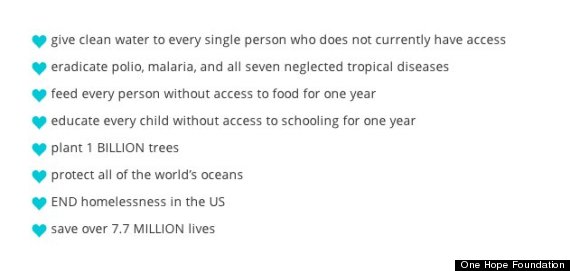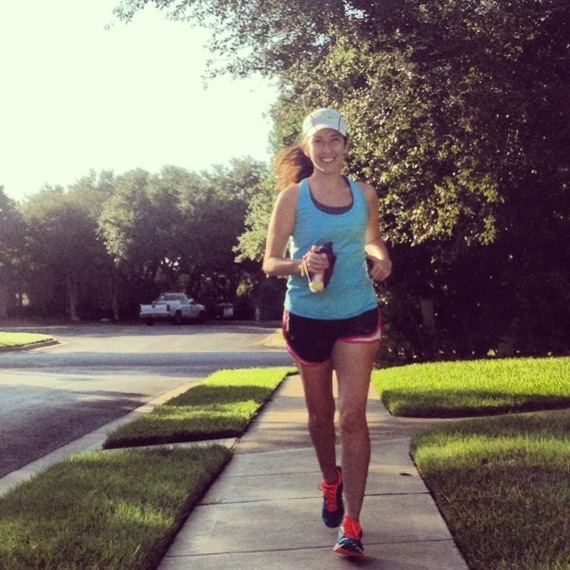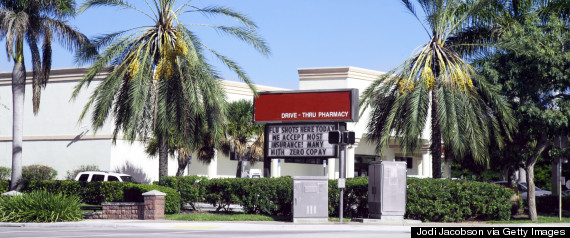For people who want to watch their waistline while leaving a smaller carbon footprint, plant-based protein is all the rage right now. And leaping into the fray is Botan, a GMO-free protein drink made from peas. Launched in early 2014, it was initially only available in a few stores in Santa Monica. But it soon made the leap from niche product to major player when GNC decided to stock it in more than 2,000 of its stores nationwide.
A bottle of Botan contains 12 grams of protein -- 25% of the recommended daily allowance -- as well as healthy doses of vitamins C, B6 and B12, while containing a mere 110 calories. It tastes odd, no doubt about it (think fruit juice mixed with peas), but it's better than most of those nasty protein shakes and bars. No wonder early adopters include everyone from Jessica Alba to Mark Cuban.
I sat down with Botan co-founder and CEO Edward Cannan, who took some time out from frantically ramping up the operation to talk to me about how it came to be and where the brand is going from here. So sit back, relax, have a glass of plant protein, and enjoy....TONY SACHS:
What differentiates peas from other plant-based protein?EDWARD CANNAN: Peas are completely allergen-free, unlike other forms of protein which can be harder to digest because you have allergies -- often an allergy that you don't even know you have. But what peas really have that others don't have is a great balance of essential amino acids. If you have a good balance of those ones, then you are going to have a good source of protein. Rice has some protein, but a very low amount, because it doesn't have a good balance of those amino acids. Peas, on the contrary, have a great balance. So it's really way better and way easier to absorb that type of protein.
The second part is, you could think of soy, for example, as a pretty good source of protein. But the amount of estrogen in soy is really high -- there's a lot of controversy about it. And I'm not talking about the non-GMO/GMO thing when it comes to soy, because that's even worse. Like, 98% of the soy in the US is genetically modified. That's not the case with peas. So green peas, in that sense, seemed like the most perfect match, as a plant-based protein. And also, what we found out later, green peas make you feel fuller for a longer time than any other plant protein. So when you drink half a bottle of this, you're not hungry after. The goal is to help people balance the diet. So we want them to eat less bad food and more good food, but it's not a transition that is always easy to do. When you have [Botan], it's much easier, because any time you have a craving for something that you're not supposed to eat, then you can have that. It's very clean and easy to digest, and it's convenient. So we're helping people to transition to that type of diet.
 Botan co-founder/CEO Edward Cannan, drinking his pea. Yes, I have a 12-year-old's sense of humor.
Botan co-founder/CEO Edward Cannan, drinking his pea. Yes, I have a 12-year-old's sense of humor. TS:
So tell me about the accident that led to your starting Botan.EC: I used to work for a company you know pretty well, LVMH Moet Hennessy. I was having a blast, it was just great. I love champagne, I love spirits, I love wine, I collect them. And I have always been very sporty, so I always need to do some sports. I was playing soccer after a rough night, and I injured myself, stupidly and really badly. At the goal, a guy came by my left and I pretended I was going right, but actually went left. My body shifted, but not my knee. So it exploded and I fell. So anyway, I went back to the hospital, and they said... everything is destroyed. They told me, you won't be able to walk for the next four months, and we don't know if we can actually intervene right now, since you've got so much fluid in your knee.
I had lost over 12 kilos -- over 20 pounds. I don't gain weight from eating, I can eat as much as I want, I am lucky. But I lose a lot of muscle, and muscle is heavier than fat. So my overall weight was dramatically lower. My right leg was a stick. They told me, you have to eat a lot of protein. I don't know anything about food, if it's good that's all I care about. So they gave me the green light to eat as much meat as I want, so I was having a lot of it. I don't think I was having that much more than I usually have, I was just having it. And I kept getting sick, so I saw a doctor, and I said I keep getting sick, there's something wrong with me.
They did a blood test, and it came back and he said, your immune system is destroyed. It was a five day stay in the hospital [when I hurt my leg], so I was on morphine for five days. Basically, that took a lot of my immune system down. I said, great news, it'll go back to normal. He said yes, but we noticed something else. You know what gout is? I said, yeah, I know what gout is. The king of France used to get it, it's a virus, and it's gone. He said, "Ummm, it's not a virus, it's not gone, and you're about to have it. Remind me how old you are?" I was 26. He said he'd never seen such a high uric acid [an indicator of gout], and you need to change your diet. I was like, well, they told me I had to eat protein. He said, do you drink any wine or champagne? I said, yeah, I drink champagne... a little. Spirits? A little. Red meat? Yeah, some. So it was a game changer. I realized, OK, I don't see it on my body because I don't gain weight, but I'm still killing it on the inside. My body was just pure acid.
And so he told me I had to switch. I said, well, where am I getting my protein from? And he said, beans, quinoa, peas.... And then I realized, wow, there's so many options. But at the time I was forced to eat whey protein shakes, and whey bars, to get this protein. After my swimming, I had to drink all these shakes. And whey is really acidic. It's not really... natural. Our bodies are not meant to process lactose after a certain age, and some babies can't even digest it on their own. It's demanding a lot from your body to digest, especially from your kidneys, so it's kind of tricky.
I was forced to drink those things, and I didn't want to. And I started cutting down and started balancing my diet, and then it really worked wonders on me and I realized, look, India is almost all vegan most of the time, and in China, their diet is mostly rice-based. There's a lot of people who can thrive and be really happy with a low amount of animal protein. And that's when I realized, there's no drink out there that offers that. That's exactly what I needed. Because I didn't want to force myself to drink protein shakes. You know, I need 50 grams [protein] a day, how can I get that? I have a busy lifestyle. It was a challenge, and I think it's a challenge for a lot of people.
TS:
Did you realize at the time you were developing and launching Botan that you were latching on to a growing trend with plant-based protein?EC: When I launched Botan, prior to that I would interview people who were buying kombucha. So I'd be at Whole Foods and I'd say, "Hey, I'm working on my MBA right now, and we're working on a segment of nutritional beverages, may I ask you a couple of questions? Why do you buy this drink?" "Uh, it's good for me." "What is kombucha?" "Kombucha is, uhhh...." So they start reading. "Kombucha is, uh, fermented tea." "Yeah, OK, what does it do to you?" "Oh, um, it's good for me." "Why is it good for you?" And they'd be like, "Full of... antioxidants!" "What are antioxidants?" "I don't know, but..." And they realize, I know nothing about what I'm buying.
The difference with us is that, it might be a trend, but it's also necessary. You need your protein somehow. Our bodies are 25% protein. It might be a trend, but it will stay, because it's something you need. It's not something like, oh, today I can do without it. You spend too much time without protein, your body shuts down. And it's actually becoming now, the consumers that we have, they buy a bottle a day, 36 bottles a month, and we actually have such demand that online we're now just implementing a monthly subscription, so every month, you get a case.
TS:
Did you have a problem getting the source ingredients? The peas, for instance?EC: The peas was the hard part. There's a lot of demand for green peas -- it's a trend that keeps on growing and growing. We were small and we were getting bigger, so in the business world we were not known at all. It was like, who are those kids just showing up? But we never wanted to compromise on the quality, so we always went non-GMO, which is not necessarily that easy to find. But we managed to find it, and we were able to apply our technology to doing what we're doing, so it still works. It's secure for at least a year and a half, two years -- we know that we have enough to do what we have to do.
TS:
How do you extract the protein from the peas?We have technology that allows us to extract it and have it soluble. That's why it's not chalky and it's not hazy or hard to digest. A lot of people have been asking, especially big companies, Coca-Cola, Pepsi -- how do we do it? From a purely scientific aspect, you can actually nourish people with that stuff, almost, because you have soluble protein. We're talking people who have digesting issues. So let's say you have cancer, prostate cancer, or your colon has been removed, or you have liver issues. How do you nourish people like that? So, the future is finding out how to nourish those people in a way where, you know, if they have this part of their body missing, well, there's other alternatives. That's not the goal of Botan at all, but they think in a long-term health, science, pharmaceutical way of thinking sometimes, and they want it.
TS:
What was your capacity to produce in the beginning?EC: We were begging to produce only 5,000 bottles and no one will do that -- the [bottlers] don't want to stop the machines to do that, they just want to run for two days in a row. Then we went to 10,000, and then we were in the 20,000 range. But the first order from GNC is over 100,000 bottles. So we had to say, 'Guys, we don't need a couple of hours, we need a couple of days." But having the right partners helped us. So we got lucky.
TS:
Have you had any problems meeting demand?EC: Scaling up? Yeah. When we first asked GNC to carry us, they said "We want you in 200 stores." Then they said, "Actually, after trying the product, we want you in 2,000 stores." I can't complain about it, because it's a good problem to have, right? But yeah, a lot of challenges. Like in any form of production, you know how to make a small quantity of something, but then you want to scale up, it's not multiplying by 6, it's not proportional. It's like, all the complications, from PH to preservative ingredients you need to add, so... it's challenging.
TS:
How did you choose the flavors [Pineapple-Coconut, Cherry Tomato and Strawberry-Cucumber]?EC: It's really tough to choose the flavors. The ultimate goal is to not compromise the quality of the product. So, we can add cane sugar -- it would taste a lot better. We can cheat and use unnatural flavors. But we don't want to do that. So basically, you have a base, which is pea protein, and you need to find flavors that will offset that type of flavor. We tried hundreds of different organic natural flavors
TS:
What was the most disgusting one?EC: Once we tried, um... there's been many! Once we tried celery, and that was just not possible.
TS:
Yeah, celery and peas....EC: Too bitter. So that was bad. But also, what we did, we had samples, so we sent samples to, like, Whole Foods, and we'd say, hey guys, what do you think about this one? So it's searching, feedback, from the experts from the industry as well as just normal consumers. Sometimes you produce 100 bottles and you say, hey guys, what do you think about this one?
We also go by colors. You have to think about how it's going to look on the shelf. If we do six different flavors and they're all red, that's not going to help the image.
TS:
What's getting your customers to drink Botan?EC: Number one is to balance the diet. They know processed food is not good. To what extent they don't know. But they know they should try to eat healthier. So they incorporate a healthy alternative into their life -- instead of eating a heavy salad, they have a light salad and a Botan. So it's combining both that in the end makes it a super-healthy meal, where you get your protein. For other people, we have professional athletes and supermodels who actually drink it while they're working out and after working out, because it will replenish their muscle mass very quickly. It has a low amount of calories and a low amount of sugar, so for women in particular, it's very appealing. But anyone, starting with me, will drink it to balance their diet. It's not easy.
A lot of people have experimented with it in different ways, whether to do a cleanse, or they need to lose some weight because they have an event they need to look good for. They want to be fit and ready and feel confident about themselves. So for two days or three days they'll just stick to that and super-light food, purely salad and things like that.
TS:
Do you recommend Botan for a cleanse?EC: Oh yeah. Most other cleanses out there don't offer protein. So when you deprive your body from something that's 25% of your body mass, you overreact -- it's not happy. And when you cleanse, it's kind of tough on your body. You're tired, upset, you can have headaches, your mood is going to shift. So cleansing is about removing the bad stuff, but it doesn't mean you're not able to incorporate the good stuff. When I come back from Christmas, from France, I'll probably go on a cleanse for two days (laughs). Because when I'm in France, I tend to indulge.
TS:
What have you got in the pipeline after launching at GNC?EC: GNC picked up two more flavors starting in January, mango-peach and guava. They tried it and they said, "We want it." And they said, we want it to be ready for January, because there's so much demand [then]. People are like, OK, I've abused, now it's time to reset.
You enjoy the good news for, like, 10 seconds. Then you think, what are the consequences of being so exposed? I have such an amazing customer. What do we need to do now? There are a lot of things we need to do. We need to make sure everything is perfect. Because they don't screw around. To them, you're tiny. But that's the way you start a relationship with them, so we want everything to be perfect. You told them you can deliver, all that stuff needs to be well done. Managing growth is harder, and not as fun, as I expected. But many brands, beverage industry-wise, struggle and don't make the cut and don't gain distribution. We don't have that problem, we lucked out. We have something that is new and different, helping people, people see the benefits. But the work has to continue.
from Healthy Living - The Huffington Post http://ift.tt/1vFFeoM
via
IFTTT







